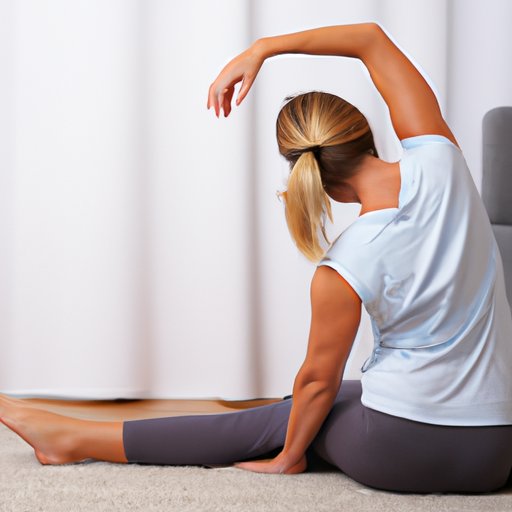How to Fix Lower Back Pain: Helpful Tips and Advice
Lower back pain can be a frustrating and painful experience, affecting millions of people of all ages and backgrounds. It can cause discomfort, stiffness, and even disability, and can impact one’s everyday life. Fortunately, there are several ways to alleviate lower back pain and prevent it from happening in the future. In this article, we’ll provide you with helpful tips and advice on how to fix lower back pain.
Understanding the Causes of Lower Back Pain
Before we delve into the tips for alleviating lower back pain, it’s essential to understand the various causes that can contribute to it. Some of the most common causes are poor posture, spinal injuries or accidents, and muscle strain. Poor posture can strain the lower back muscles, spinal injuries can cause fractures or displacement of the vertebral discs, and muscle strain can result from overuse, heavy lifting, or sudden movements.
If you’re not sure what’s causing your lower back pain, it’s best to consult a doctor or physical therapist. They can diagnose the condition and provide you with personalized recommendations based on your medical history and physical examination.
Focus on Stretching Exercises
Stretching exercises can help alleviate tension in the lower back muscles, leading to improved flexibility and support for the spine. Some effective stretching exercises that you can try on your own include the knee-to-chest stretch, hamstring stretch, pelvic tilt, and spinal twist.
The knee-to-chest stretch involves lying on your back with bent knees and raising one knee towards your chest while holding your thigh with your hands. Hold the position for 20-30 seconds and repeat with the other leg.
To perform the hamstring stretch, sit on the floor with your legs straight in front of you and reach towards your toes with your hands. Hold for 15-20 seconds and repeat several times.
The pelvic tilt involves lying on the back with bent knees and rocking the pelvis back and forth while contracting the abdominal muscles. Repeat for 10-15 repetitions.
The spinal twist is performed by lying on the back with bent knees and rotating the hips to one side while keeping the shoulders on the floor. Hold for 10-15 seconds and repeat on the other side.
Encourage Better Posture
Poor posture can contribute to lower back pain, so it’s crucial to avoid it when sitting, standing or working at a desk. Some tips on how to improve your posture include using an ergonomically designed chair and desk, keeping your shoulders relaxed, and avoiding crossing your legs for long periods.
When sitting, make sure your feet are flat on the floor and your thighs are parallel to the ground. Your back should be straight, and your shoulders should be back and relaxed. Avoid slouching or hunching over your desk.
When standing, distribute your weight evenly on both feet, keep your shoulders back, and your head level. Don’t stand in one position for too long, and take breaks if possible.
Remind the Importance of Rest
Rest is crucial in healing the body and relieving lower back pain. Make sure you get a good night’s sleep, aiming for seven to eight hours of sleep per night. Avoid sleeping on your stomach, as this can strain your neck and lower back. Instead, try sleeping on your side or back with a pillow between your legs for support.
Take breaks during the day if you have a desk job or spend long periods sitting or standing. Get up and stretch or take a short walk to get the blood flowing and relieve any muscle tension.
Avoid prolonged sitting or standing, as this can cause a strain on the lower back muscles. If you have to sit for long periods, make sure you take short breaks every half hour or so to stretch your legs and back.
Advise on Balancing the Strength of Muscles
Muscular imbalances can contribute to lower back pain, so it’s crucial to balance the strength of your core muscles. Effective exercises to strengthen core muscles include the abdominal muscles, gluteal muscles, and back muscles.
Try exercises such as planks, abdominal crunches, squats, and bridges to target these muscles. Start with a few repetitions and gradually increase the intensity and duration as you build strength.
Offer Other Therapies
In addition to exercise and proper posture, there are other complementary therapies that can help alleviate lower back pain. Some of these include chiropractic adjustments, massage, acupuncture, and physical therapy.
Chiropractic adjustments involve gentle manipulation of the spine to relieve any misalignment that may be contributing to lower back pain. Massage can help relax tense muscles and improve circulation, while acupuncture involves the insertion of small needles into specific points of the body to relieve pain and tension.
Physical therapy can be helpful if your lower back pain is due to an injury or chronic condition. You’ll work with a physical therapist to develop a personalized exercise and rehabilitation plan to alleviate pain and improve mobility.
Conclusion
Lower back pain can be a debilitating condition, but with the right approach, you can alleviate your symptoms and prevent it from recurring in the future. We’ve discussed several tips to help you fix your lower back pain, including stretching exercises, posture improvement, rest, muscle balancing, and alternative therapies.
Remember to consult a doctor or physical therapist if you’re unsure about the cause of your lower back pain. It’s essential to listen to your body and start small when incorporating these tips into your daily routine. With consistency and patience, you can alleviate your lower back pain and go back to living your best life.
